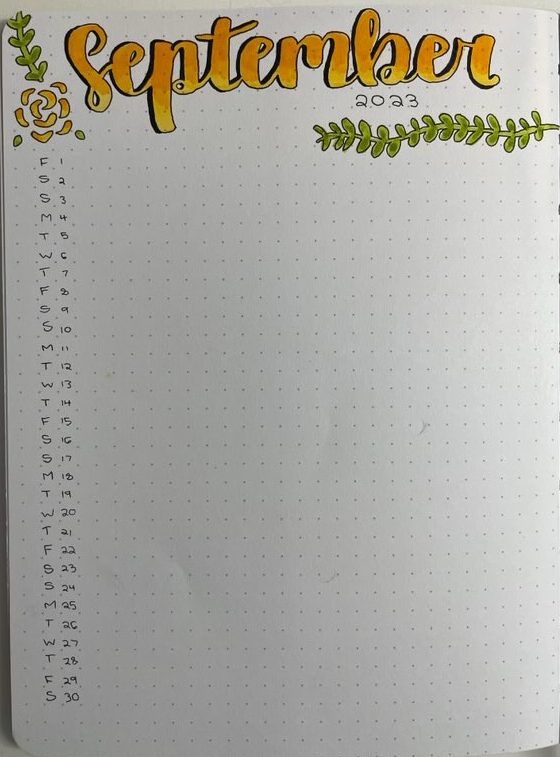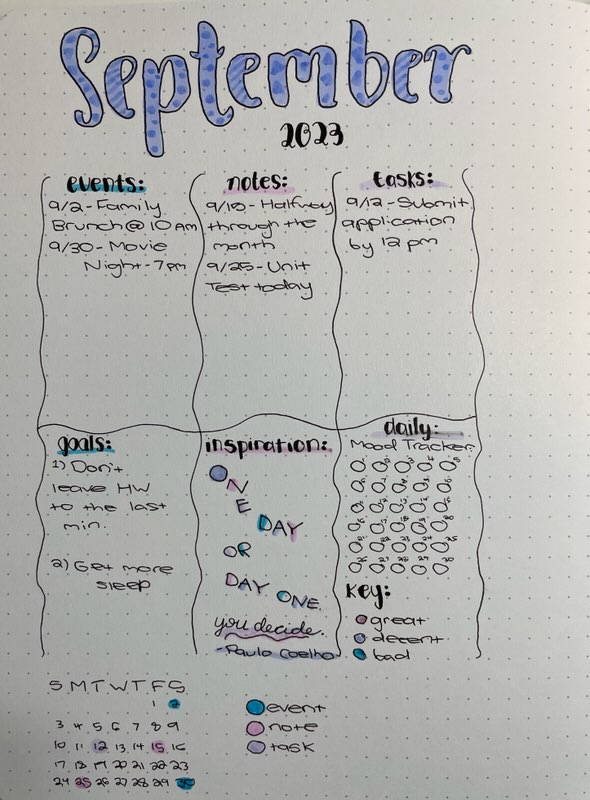There are a lot of ways to organize your life online these days – digital calendars, note-taking apps, and a variety of other websites and programs. But for paper-pencil people, or for people in need of a screen break, a physical solution can be the better option for task organization.
Ryder Carroll, creator of the Bullet Journal method, understood this need and decided to share his unique productivity system with the world. His system uses a technique called rapid logging. According to Carroll’s website, bulletjournal.com, bullet journaling allows for the efficient organization and recording of various notes, tasks, and events. Basically, you’re creating itemized to-do lists using symbols – an open circle represents an event, a dash signifies a note, and a bullet point (hence the name “bullet” journaling) indicates a task which needs to be done.
There are also ways to move a task from your current to-do list to a future one. This is called migration, which is generally done by drawing an arrow over your task bullet. Other symbols can also be used in a bullet journal key, such as an asterisk to represent a task or note which takes priority. This key is not set in stone, however – when journaling, you should use whatever symbols best help you to stay organized.
Bullet journals can include daily logs, weekly logs, monthly logs, and future logs. A log is a page that assigns your tasks, notes, and events to a specific date. Future logs contain everything you need to get done for up to several months in the future. At the start of each month, a monthly log is created to encompass what is going on and what needs to be done for the next thirty days or so. Then, for each daily log, one refers to their monthly log and copies down their to-dos, events, and any comments for that day.
When using these logs, bullet journalers can migrate their tasks from their future logs to other ones. This system helps ensure that no notes, events, or tasks are forgotten. In addition to these logs, you can create other pages – or spreads – in your bullet journal, such as a mood tracker, where you can log how you feel each day. You can also use a page to record your goals or write down what you are grateful for.
In addition to helping with productivity, bullet journaling can also be a creative outlet. Many bullet journalers use decorative tape or calligraphy pens to incorporate color and style into their spreads. If you have artistic flair or enjoy drawing and design, it can be a great way to exercise that side of you.
When starting bullet journaling, it is important to establish your intentions for the process. “If you don’t define your purpose, the purpose won’t be yours, and your practice will eventually feel meaningless,” says Carroll. “Your life, your challenges, and your projects are unique. Match your tools with your purpose.”
Whether you’re wanting to feel more productive and organized or you’re just looking for a way to express yourself on paper, bullet journaling is a unique system that can be adapted to fit your needs and goals.
For more information or inspiration, feel free to check out Carroll’s website, which is linked here. Happy journaling!


